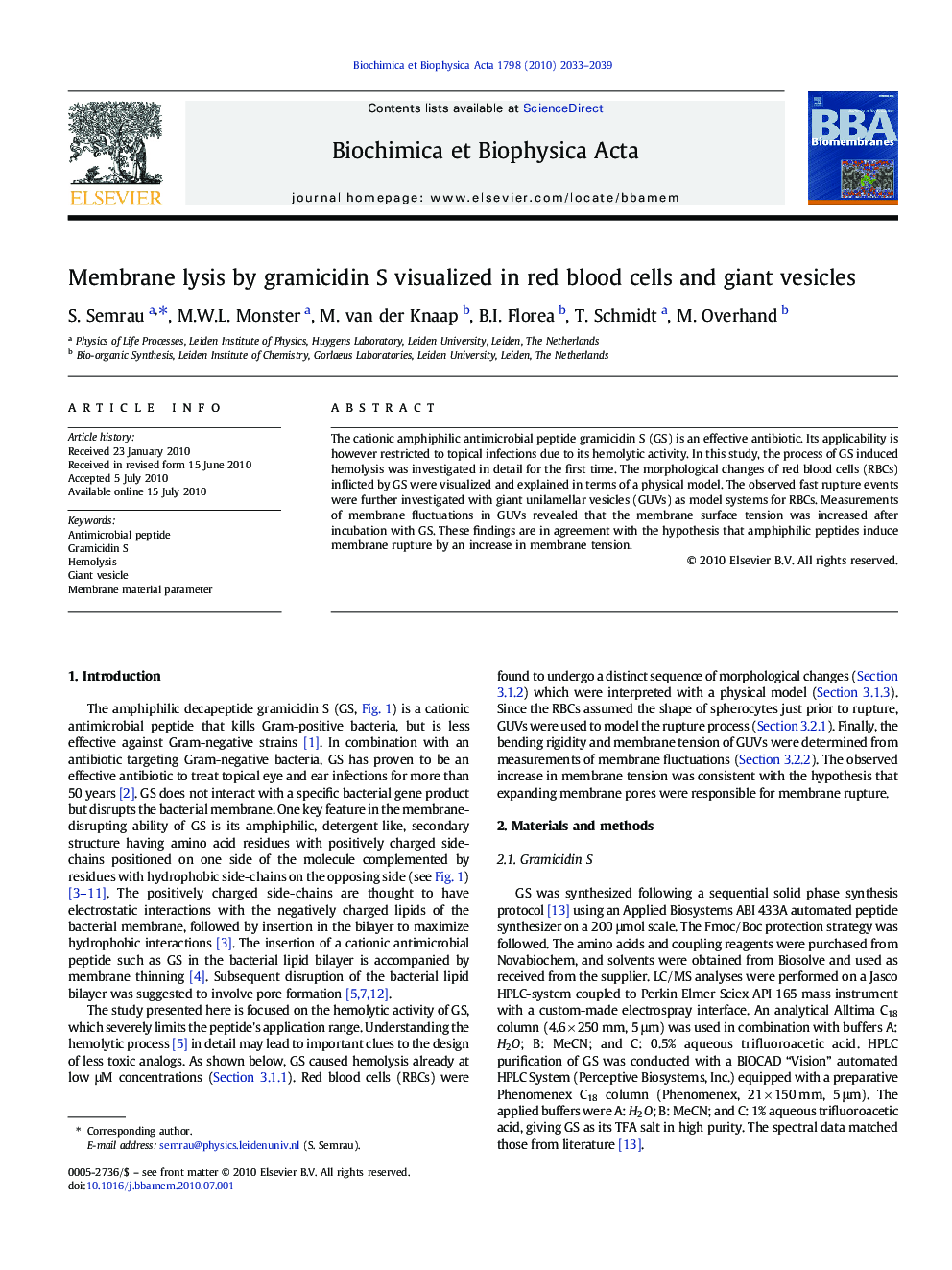| Article ID | Journal | Published Year | Pages | File Type |
|---|---|---|---|---|
| 1944667 | Biochimica et Biophysica Acta (BBA) - Biomembranes | 2010 | 7 Pages |
The cationic amphiphilic antimicrobial peptide gramicidin S (GS) is an effective antibiotic. Its applicability is however restricted to topical infections due to its hemolytic activity. In this study, the process of GS induced hemolysis was investigated in detail for the first time. The morphological changes of red blood cells (RBCs) inflicted by GS were visualized and explained in terms of a physical model. The observed fast rupture events were further investigated with giant unilamellar vesicles (GUVs) as model systems for RBCs. Measurements of membrane fluctuations in GUVs revealed that the membrane surface tension was increased after incubation with GS. These findings are in agreement with the hypothesis that amphiphilic peptides induce membrane rupture by an increase in membrane tension.
